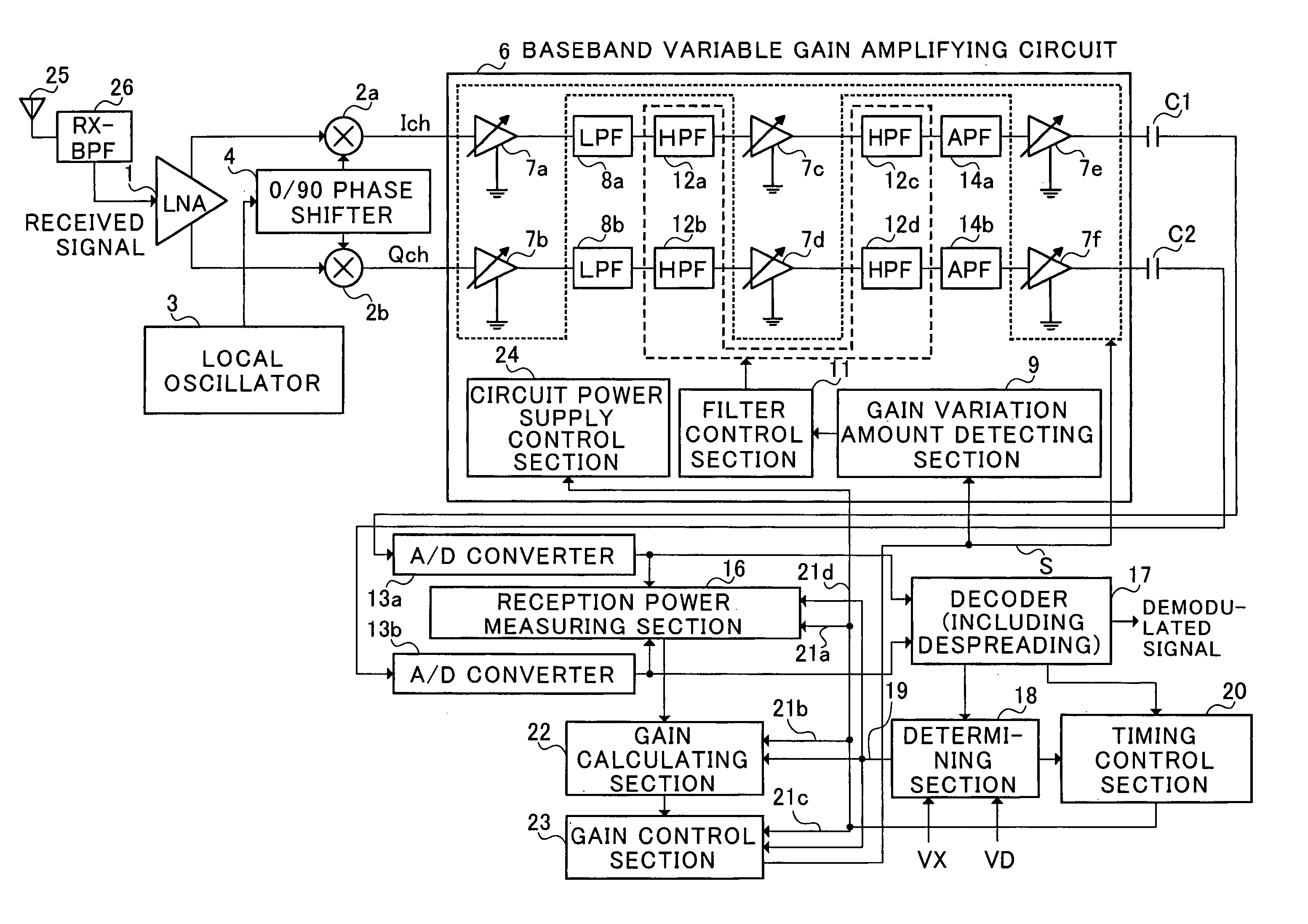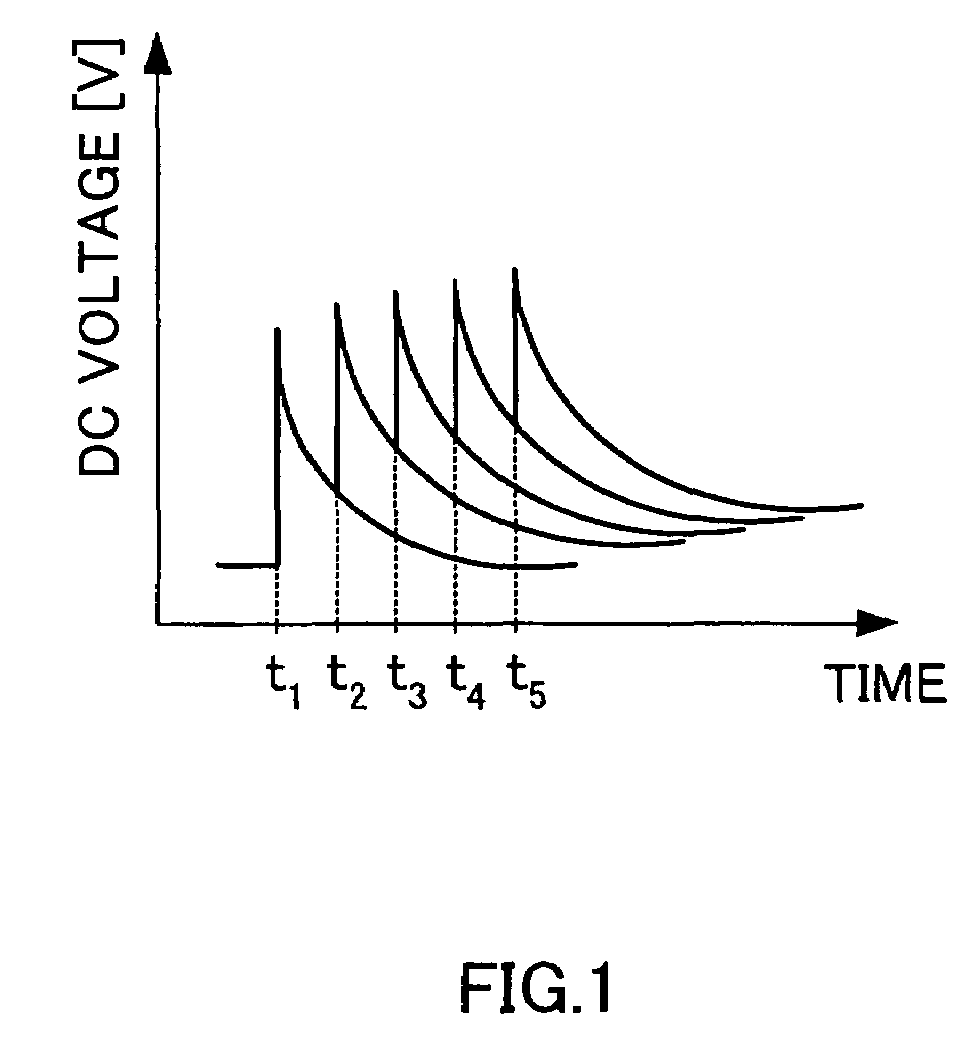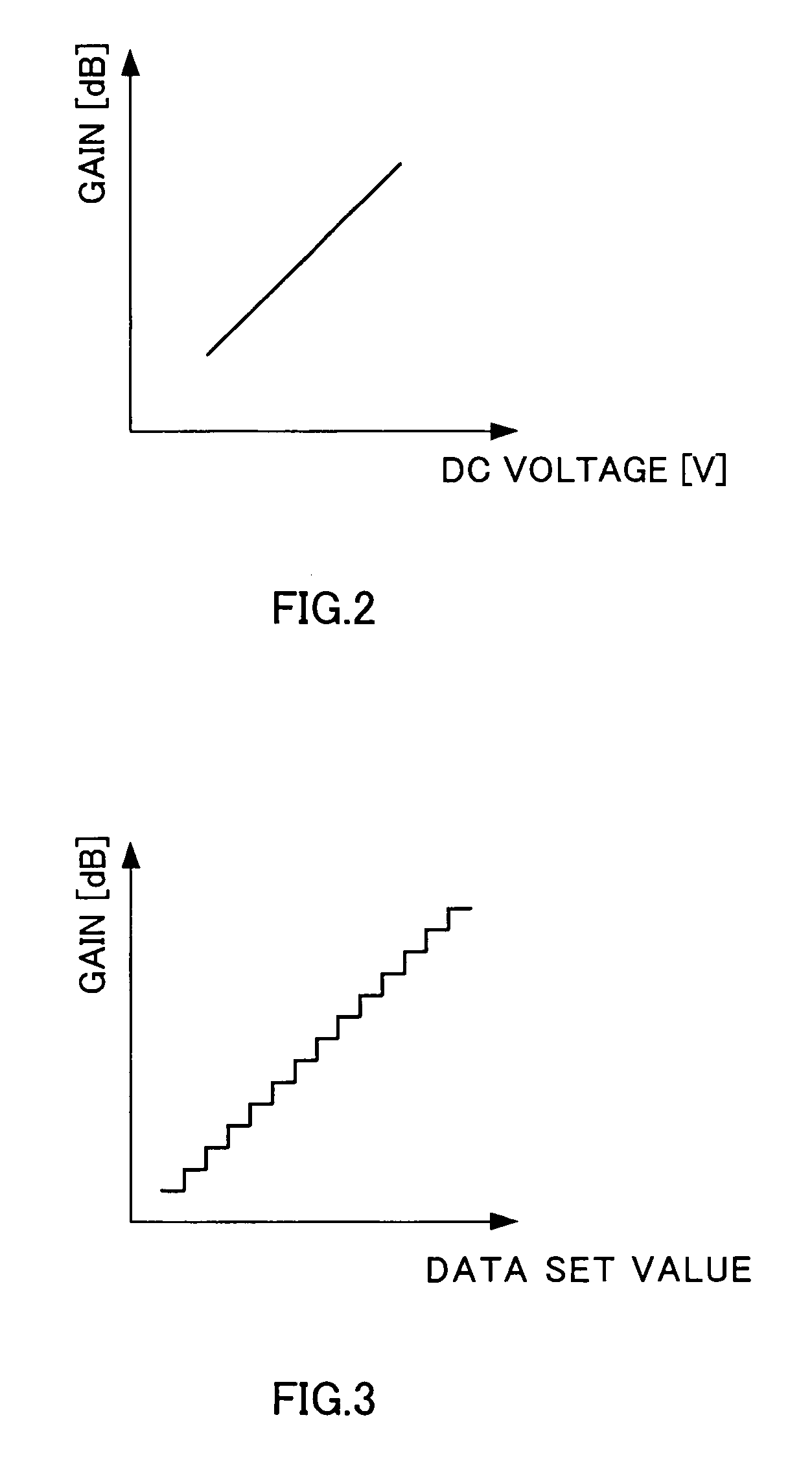Direct conversion receiver and DC offset reducing method
- Summary
- Abstract
- Description
- Claims
- Application Information
AI Technical Summary
Benefits of technology
Problems solved by technology
Method used
Image
Examples
first embodiment
[0056](First Embodiment)
[0057]It is a feature of the present invention to detect a gain variation amount of a variable gain amplifier, and switch a time constant of a high-pass filter.
[0058]Prior to explanations of a configuration and operation of a direct conversion receiver of the present invention, referring to FIGS. 1 to 9, reasons will be described below that switching of cut-off frequency of a high-pass filter is effective at reducing a DC offset in a direct conversion receiver.
[0059]FIG. 2 shows gain characteristics of a variable gain amplifier when the gain of the variable gain amplifying circuit is varied using an analog control voltage, and FIG. 3 shows gain characteristics of a variable gain amplifier when a digital control signal (serial data) is used to control.
[0060]The invention according to this embodiment can be implemented in a variable gain amplifying circuit with characteristics that the gain varies linearly as shown in FIG. 2 or 3.
[0061]FIG. 4 shows the relation...
second embodiment
[0131](Second Embodiment)
[0132]FIG. 16 is a block diagram illustrating a configuration of a direct conversion receiver (W-CDMA receiver provided with an internal AGC circuit) according to the second embodiment of the present invention.
[0133]The primary configuration of the receiver according to this embodiment is almost the same as in the first embodiment (FIG. 10). In this embodiment, features are that switching of time constant of the high-pass filter is controlled based on AGC mode signal 19 output from determining section 18 and timing control signal 21e from timing control section 20, and that gain variation amount detecting 9 in FIG. 10 is eliminated.
[0134]As described above, the switching of cut-off frequency of the high-pass filter is required when AGC does not converge at all, for example, immediately after the power is supplied, and the loop needs to be repeated at high speed to adapt the gain of the variable gain amplifier to propagation environments at high speed.
[0135]T...
third embodiment
[0143](Third Embodiment)
[0144]Various methods are considered as methods for implementing in actual circuitry the switching of cut-off frequency of the high-pass filter that is the feature of the present invention. This embodiment describes various modifications of the configuration for switching the cut-off frequency that are not disclosed in the above-mentioned embodiments.
[0145]FIG. 18 illustrates an example where a direct conversion receiver controls the gain of the variable gain amplifier using digital data (serial data) instead of using an analog control signal.
[0146]Gain control section 23 outputs a gain control signal (serial data). For example, the serial data has a width of 16 bits, and among the bits, 10 bits are of gain data, while remaining 6 bits are available for use in various control.
[0147]Then, the control data is “1” when switching the cut-off frequency of the high-pass filter. On the contrary, when the control data is “0”, the switching of cut-off frequency is not...
PUM
 Login to View More
Login to View More Abstract
Description
Claims
Application Information
 Login to View More
Login to View More - R&D
- Intellectual Property
- Life Sciences
- Materials
- Tech Scout
- Unparalleled Data Quality
- Higher Quality Content
- 60% Fewer Hallucinations
Browse by: Latest US Patents, China's latest patents, Technical Efficacy Thesaurus, Application Domain, Technology Topic, Popular Technical Reports.
© 2025 PatSnap. All rights reserved.Legal|Privacy policy|Modern Slavery Act Transparency Statement|Sitemap|About US| Contact US: help@patsnap.com



